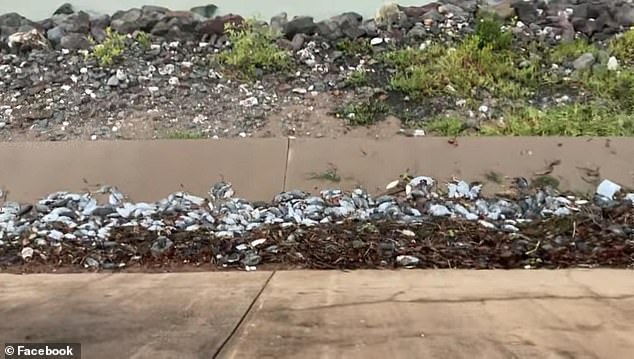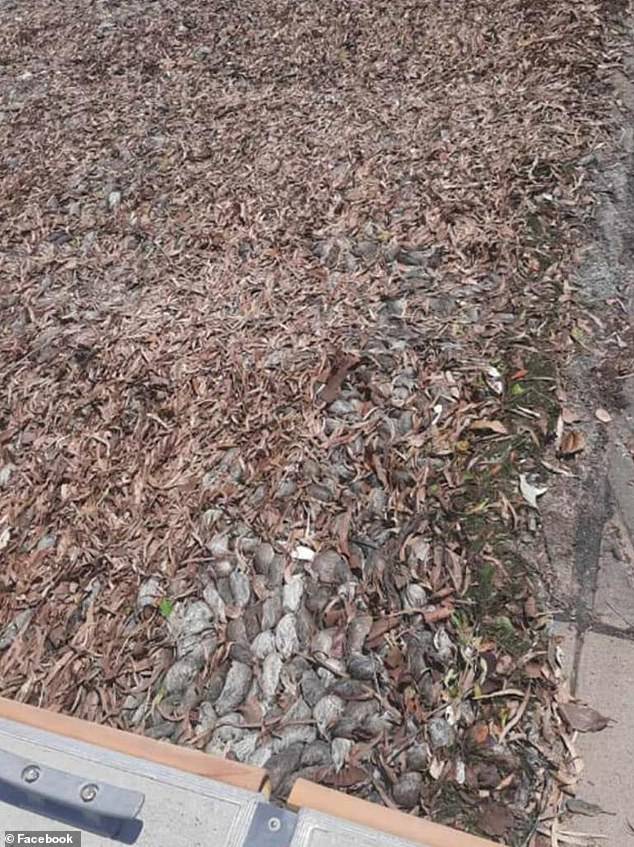Rat-pocalypse! Skincrawling reason why ‘millions and millions’ of starving ‘cannibal rats’ are descending on this picturesque Aussie town in Far North Queensland
A fishing village in far north Queensland has been overrun by cannibal rats, with thousands of bodies left to rot on the beach every day.
A rat plague has been ravaging parts of the Sunshine State for several months, but locals in Karumba, on the Gulf of Carpentaria, say the situation has deteriorated dramatically this week.
Footage shows bloated rat bodies clogging the beaches around the small town and thousands of rodents swimming in the river at night.
“They’re really getting out of control,” one fisherman told ABC North Queensland.
‘There’s a stench along the riverbed. Last night, with the moonlight, the river really lived with them.’
A rat plague has been ravaging parts of the Sunshine State for several months, but locals in Karumba, on the Gulf of Carpentaria, say things have worsened dramatically this week
Another local said: ‘We saw them dead or alive, but exhausted, in the water and on the shoreline. [When we returned four days later]they ran on the sand’.
The problem is not limited to the coast, however, as several outback towns are struggling to keep rats and mice under control.
One resident described ‘millions and millions of rats on the road’ outside Cloncurry, about 450km south of Karumba.
“Every dead rat on the road had another three or four rats eating it. There was about a meter between dead rats. It was crazy,” he said.
“You drive between McKinlay and Winton at night and the ground is crawling with rats. They are so fat that they eat their own food straight away after being squashed on the road,” said another.
University of Sydney ecology professor Mathew Crowther explained that a perfect storm of wet conditions and bountiful crops has led to a massive increase in rodent populations.

Footage shows bloated rat bodies clogging the beaches around the small town and thousands of rodents swimming in the river at night

University of Sydney ecology professor Mathew Crowther explained that a perfect storm of wet conditions and bountiful crops has led to a massive increase in rodent populations
“Most rodents eat vegetation, seeds, they eat insects and they eat everything in pest proportions,” he said Yahoo News.
“Our animals are adapted because they have these very variable rainfall patterns and the animals that come with that are quite successful, they can respond quickly.”
He added that the huge number of rats in Karumba could prompt them to swim to nearby sandbanks in search of food.
However, they would not have the energy to swim back and as a result would drown.
Professor Crowther explained that the dwindling food supply for the rats will eventually cause populations to return to pre-plague levels.
“They tend to get to really high numbers, but then they start to crash because they’ve eaten up their food sources,” he said.

One resident described ‘millions and millions of rats on the road’ outside Cloncurry, about 450km south of Karumba
